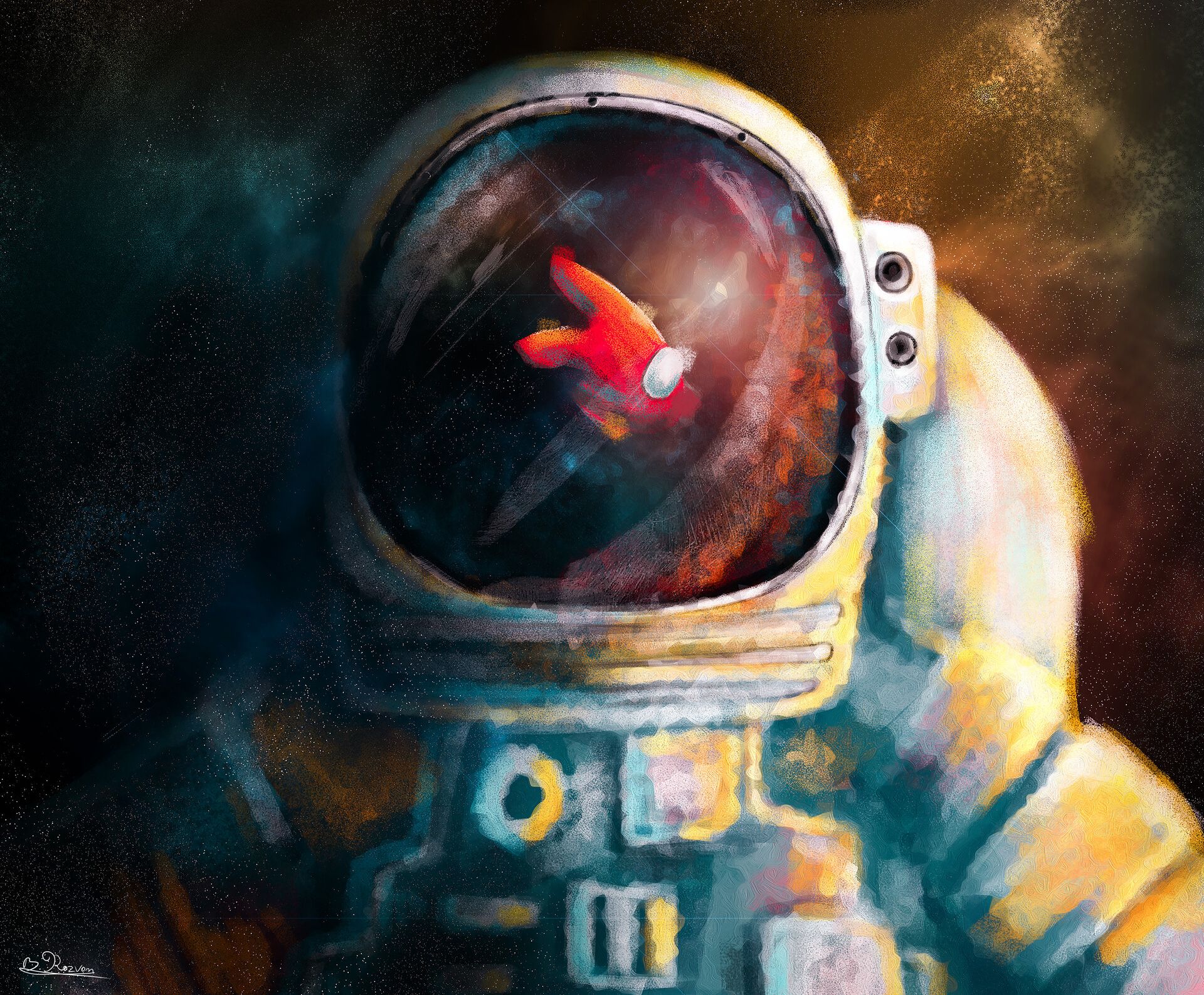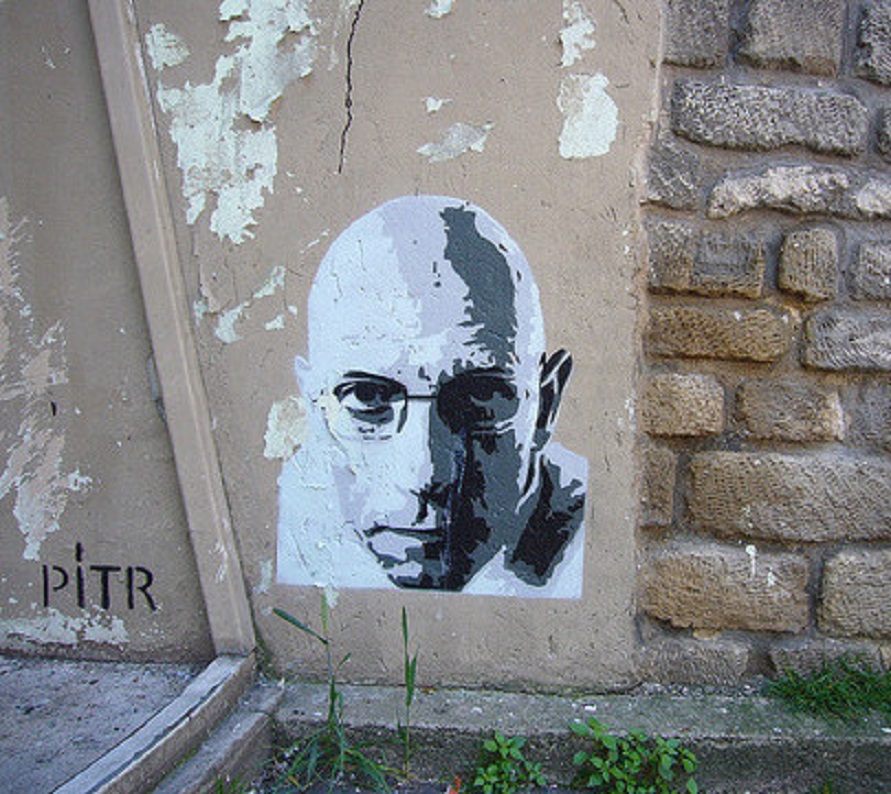The Holographic or Anaxagorean Paradigm (if we want to experiment with looking at things in this way) shows us that nothing exists apart from the Whole. If ‘every little part contains the Whole’ then of course nothing can exist apart from the Whole. There’s really no way around this – we can’t escape the Original State of Unity no matter what we do!
This has far more implications than we might at first imagine. If ‘nothing exists apart from the Whole’ then this means that what we normally think exists doesn’t whilst what actually does exist is something which is frankly inconceivable to us (as well as being something that we, being the practical creatures that we are, wouldn’t the faintest interest in anyway). The Whole isn’t a practical thing; it is – we might say – the ultimate in impractical things and so – from a strictly utilitarian POV – we’d vote to get rid of it even if we weren’t totally terrified by it. The Original State of Unity is ‘impractical’ because we can’t exploit it or use it as a tool – there’s no way that it’s ever going to help us to fulfil our purposes, no matter how important we hold these purposes to be. The Whole is in fact ‘the spanner in the works’ that keeps on stopping things working out for us as we’d like; its manifestations are ‘an irritant’ (or ‘error’) as far as the system of logic is concerned. They equal chaos and chaos has a bad name…
The only reason that our purposes mean what they mean to us in the first place is because we have no awareness of the Big Picture; if we were to have this awareness then – as we have just said – our purposes or goals would promptly cease to exist. And not only that, we’d see that they never did exist, not really. How can there be such a thing as a ‘goal’ or ‘purpose’ when there is ‘a little bit of everything in everything’, as Anaxagoras says? Goals only exist in the compartmentalized situation that we create in our heads; they only exist in the Formal World that we make up ourselves. In the Holographic Universe having ‘a purpose’ is a thoroughly absurd idea – the notion of a goal state in the HU is fundamentally meaningless, quintessentially meaningless. We can neither point at anything nor obtain anything because no things exist. ‘From the very beginning, not a thing was’, says Bodhidharma. This sounds pretty depressing from our normal way of looking at things, from our ‘standard conditioned viewpoint’ – it’s depressing because we no longer have any goals to go chasing after. Our hopes are tied up in our goals so if our goals go so do our hopes! Everything is ‘already there’ and so no special goal-seeking action is needed on the part of the Purposeful Self (and the PS – needless to say – isn’t so happy about this).
Another way of putting this is to say that when we see the Holographic Universe for what it is then we can no longer put our heart into playing the games that we are so habituated to playing. We can only play our games when we pretend that everything isn’t already in everything (i.e., where we pretend that the universe we live in isn’t a hologram, where we pretend that everything depends on our successful struggling) but otherwise (if we stopped pretending) then our game playing – which is all that we know – would have to come to an end. Since we don’t (and can’t) comprehend that there could be anything else other than ‘the-game-which-we-don’t-know-to-be-a-game’, this naturally comes across as the worst possible news. We aren’t going to feel particularly good about such a proposition. The world we know comes to an end just as soon as actual awareness – terrible troublemaker that it is – appears on the scene but the thing about this is that ‘the world we know’ never actually existed in the first place. We have to ask ourselves therefore what the loss is that we are lamenting or fearing so much – what is it that is so important that we will pay for it with our awareness? If everything is already there, then why all the struggling and striving?
The loss in question might be said to be our ‘sense of orientation’ because without a framework, without ‘one direction being different to another’, there is simply no possibility of orientation here. There is no purchase to be had when its Original Symmetry we’re talking about! If we want purchase – and we most definitely do – then we have to make do with an artificial situation rather than the ‘natural’ one, the one that actually genuinely exists for real that is (i.e., not as a result of some kind of mental gymnastics that we are engaging in without admitting that we are). This is what it all comes down to, therefore – would we rather have a world that we could understand (or ‘put into boxes’) which isn’t real, or a world that we totally can’t make sense of but which is real.
In the heat of the moment we always opt for the former: whichever mechanical tendencies they are within us they will clamour for a Determinate World to live in to operate in (since that’s the only type of world they can operate in) and this constant clamouring is very hard for us to stand up to (given that just about all we ever do in our everyday lives is to ‘pander to our mechanical tendencies’). The mechanical tendencies always vote for a nice determinate world to operate within (just as the coping strategies which evolved to help a child growing up in a toxic dysfunctional environment will always try to recreate those situations as an adult in order that they might continue to be relevant). Being irrelevant (or ‘redundant’) is fatal to a mechanical tendency because it has no use if this is the case and if it has no use then there’s no longer any reason to justify it being there. ‘Use’ is everything in the Mechanical World.
Mechanical tendencies, no matter how crude or fragmented, always act so as to create a ‘closed’ or ‘locked-down’ world, which is to say, a world that is based on logic, a world that exist purely in terms of unchanging mental categories – the unfettered or unregulated situation being wholly inimical to the Mechanical Self, as we have just said. The Holographic Universe does not favour the Conditioned Self (the CS being ‘that sense of identity which is created by keeping a certain set of artificial conditions in place’). Only a very narrow version of reality works for the CS and so we end up in a kind of ‘buttoned-down’ situation where there is only one authorised level of description; only the one interpretation of events or things is permitted, in other words, and the situation where there are multiple meanings (or multiple answers) never arises. There’s none of that kind of ‘weird stuff’ going on, nothing to perplex or bamboozle the poor old thinking mind, which can’t do without its prosaic boxes.
We might find the situation where there are multiple levels of description (such that there can be no final definition of anything, no matter how hard we try to obtain such a thing) completely unworkable, completely unacceptable, etc, but that doesn’t alter the fact that this is the way things are. In a ‘buttoned-down’ situation everything resolves down into ‘pixels’, so to speak – everything resolves down to units of meaning that ‘stay the same no matter what’. We can arrange those units of meaning in any way we please, but the units or pixels remain inviolable throughout. They remain the same no matter what we do with them. We can arrange the pixels in any way we want (which equals Extrinsic Freedom) but there is no way to change them. If we could drop the pixels (or ‘lose our boxes’) then this would constitute Intrinsic Freedom, but Intrinsic Freedom is the one thing the thinking mind can never provide for us. It can only ever provide trivial freedom (which is ‘the freedom to act on our unexamined assumptions’, or ‘the freedom to do what we’re told’).
In the unfastened reality however, there are no units – instead, we can think in terms of Indra’s Net, which is likened to myriad drops of dew on a spider’s web, were each droplet (or jewel) reflects every other droplet, along with all the reflections to be found in them. Nothing can ever be isolated, or ‘separated out’, in other words, unless we wish to depart entirely from reality in the course of us doing this. The metaphor of Indra’s Net demonstrates the Buddhist principle of mutual interpenetration, which is a way of saying that ‘everything interacts with everything else’. If everything interacts with everything else then really ‘all is One’, and this is the Holographic Principle in a nutshell. In terms of pure ‘aesthetics’ however the Holographic Universe wins every time – it has an elegance and subtlety that can’t be surpassed. that he buttoned-down world that is created by our thoughts – on the other hand – is crass and uninspiring to the extreme. The non-holographic universe is an insult to our natural intelligence, so to speak, and so if we want to go along with it (which we do) then we have to make sure to dumb ourselves down first. ‘Dumbness’ (which Chogyam Trungpa refers to ‘intelligent stupidity’) is the price we have to pay for Ontological Security.
We can sum up all of the above by saying that the Non-Holographic (or Non-Anaxagorean) Universe is made up of units of meaning that can’t be questioned, that can’t be changed, and which are never going to be any more than our own crass inventions. The ‘pixels’ (or ‘boxes’) making up the Regular World don’t have any relationship at all with anything outside of our fantasy scheme of things, despite all the claims to the contrary, and this is a truly remarkable thing to consider, given that the artificial ‘Pixel World’ is the only world we have to work with, the only world any of us will ever acknowledge…
Ìmage credit – sciencenews.org






